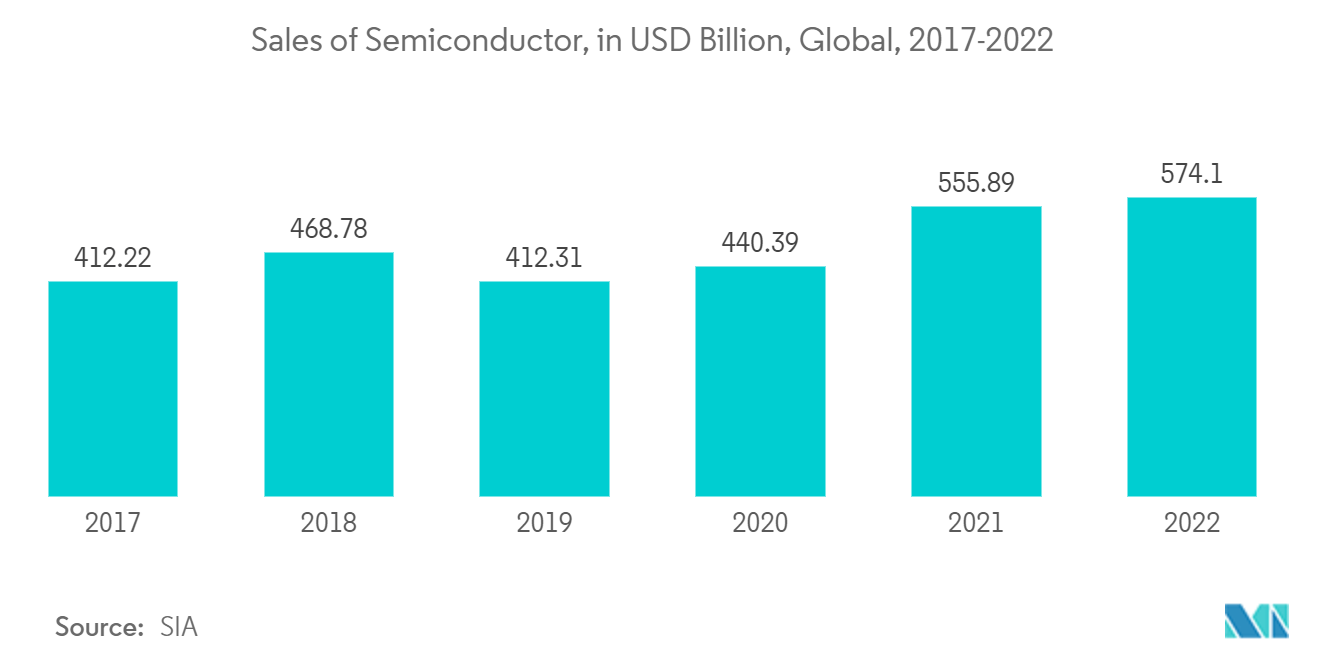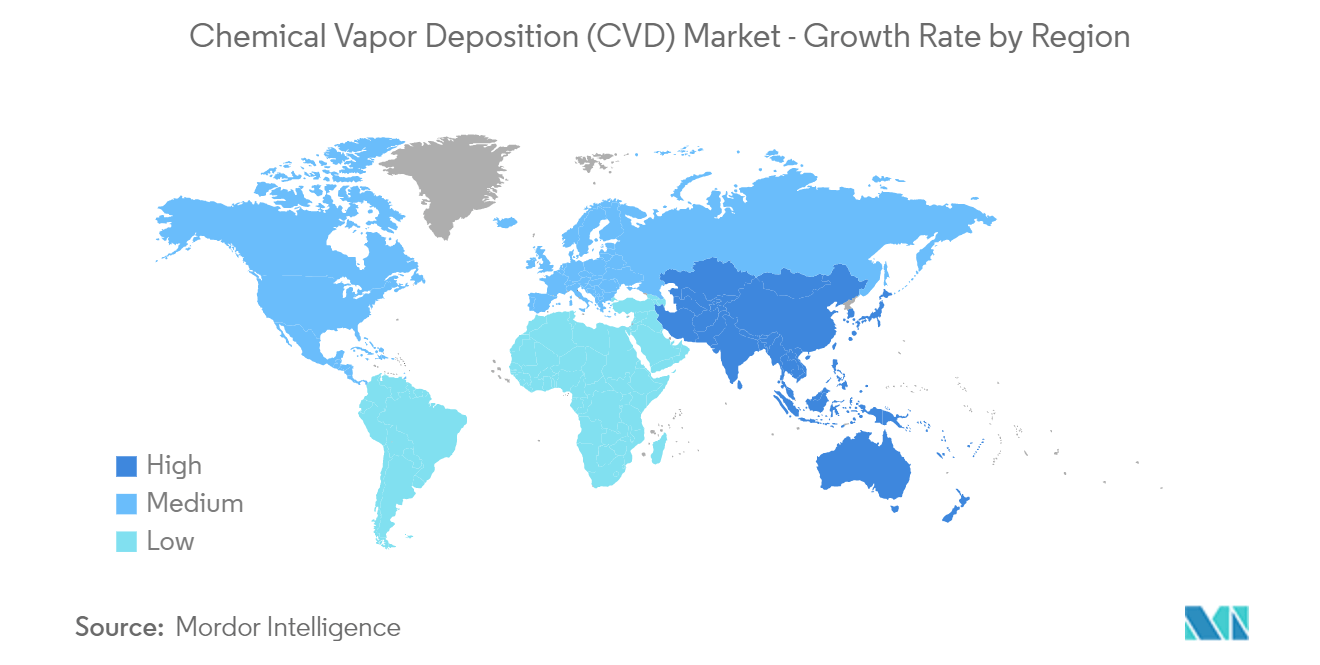Market Trends of Chemical Vapor Deposition (CVD) Industry
Increasing Demand from the Electronics Industry
- CVD is one of the most important ways to make thin films of semiconductors, conductors, and insulators, which are the three types of electronic materials.
- CVD is a key part of designing and making advanced electronic conductors and insulators, as well as structures like diffusion barriers and substrates with high thermal conductivity (heat sinks).In order to produce conductors and insulators, CVD uses a variety of materials, including titanium nitride, silicon nitride, silicon oxide, diamond, and aluminum nitride.
- Aluminum has long been the metal of choice for electrical conductors in semiconductor devices. It is easily evaporable and can undergo CVD processing at a low temperature.
- Copper is intrinsically a better metal than aluminum for the metallization of ICs. The development of CVD copper for semiconductor metallization has been on a considerable scale in recent times.
- Researchers in Japan have found that sub-quarter-micron copper interconnects can be made using metallo-organic chemical vapor deposition (MOCVD) followed by chemical mechanical polishing. This can be done on a large scale.
- CVD copper is in direct competition with sputtering, which is still the best way to make copper right now. The most likely CVD applications of superconductors to reach the practical stage are coatings for semiconductors and other electronics-related applications. The semiconductor industry is shifting massively from aluminum to copper for chip metallization.
- Also, thin films of electrical insulators are important parts of making and designing electronic parts. Silicon oxide (SiO2) and silicon nitride (Si3N4) are two of the most common materials used as insulators. The production of these materials by CVD is extensive.
- According to the Semiconductor Industry Association (SIA), the global semiconductor industry's sales totaled USD 574.1 billion in 2022. Semiconductors are crucial components of electronic devices, and the industry is highly competitive.
- Intel and Samsung Electronics are two of the biggest companies that make semiconductor chips. In 2022, Intel will make 58.4 billion USD and Samsung will make 65.6 billion USD in semiconductor sales.
- Furthermore, the retail revenue from consumer electronics sales in the United States is expected to reach close to USD 505 billion by the end of 2022, recording a growth rate of almost three percent.
- Because of this, CVD is likely to become more popular in electronic applications in the coming years.

Asia- Pacific Region to Dominate the Market
- In Asia-Pacific, China is the largest economy in terms of GDP.
- The country's reliance on coal to meet its energy needs has started to wear off, and now the government has started to close mines and restrict the construction of new coal power plants in recent years, particularly in heavily populated areas. Nevertheless, the coal sector still accounts for 59% of the total electricity consumption in the country.
- The solar energy sector of the country is mainly driven by huge-scale production and learning curve effects. The government is focused on mitigating urban air pollution and enhancing energy security and resilience by positioning the nation as the world's leading supplier of clean energy technologies of the future.
- The top three global solar PV manufacturing companies, such as JinkoSolar, JA Solar, and Trina Solar, are all headquartered in China. On May 31, 2018, the Chinese government announced subsidy reductions for photovoltaic power generation, widely known as the "531 Policy".
- According to the International Renewable Energy Agency (IRENA), the installed solar PV capacity was around 306.4 GW in 2021, up from 253.4 GW in 2020 in China. Additionally, in 2021, the value of China's solar PV exports was over USD 30 billion, almost 7% of China's trade surplus over the last five years.
- Furthermore, the electronics industry in India is mainly driven by macro-economic factors, such as growing middle-class families and rising disposable incomes. In addition to this, high preference for high-end technological devices and the declining electronics prices are also fueling the demand.
- The Indian semiconductor industry offers high-potential growth areas, as industries sourcing semiconductors in the country are witnessing high demand. India is considered to have a rapidly growing electronics system design and manufacturing (ESDM) industry, thereby driving the market.
- The electronics industry in India is mainly driven by macro-economic factors such as growing middle-class families and rising disposable incomes. In addition to this, the high preference for high-end technological devices and the declining electronics prices are also fueling the demand.
- The exports of electronic goods during the period from April to December 2022 recorded USD 16.67 billion as compared to USD 10.99 billion during the same period last year, registering a growth of 51.56%.
- Mobile phones, IT hardware (laptops, tablets), consumer electronics (TV and audio), industrial electronics, and auto electronics are key export products in this sector. As per the Ministry of Electronics and IT's vision, India's electronics industry exports are expected to increase to USD 120 billion by 2026.
So, all of these things are likely to increase the demand for CVD in the above-mentioned sectors in the region over the next few years.

